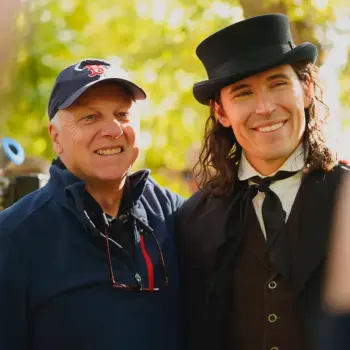
(Wikimedia Commons public domain image.)
This week, Interpreter: A Journal of Latter-day Saint Faith and Scholarship offers the perspective of a non-Latter-day Saint looking in: “The Eucharist of the Latter-day Saints: The Sacrament in the Broader Christian Context,” written by Robin Douglas
Abstract: This paper views the sacrament prayers and rituals of The Church of Jesus Christ of Latter-day Saints in the broader context of Christian eucharistic worship, focusing on how the Latter-day Saint observances both resemble and differ from those of other Christian communities. It argues that, contrary to what is often supposed, the Church has a relatively “high” eucharistic theology.
“Interpreting Interpreter: A Latter-Day Eucharist,” written by Kyler Rasmussen
This post is a summary of the article “The Eucharist of the Latter-day Saints: The Sacrament in the Broader Christian Context” by Robin Douglas in Volume 61 of Interpreter: A Journal of Latter-day Saint Faith and Scholarship. All of the Interpreting Interpreter articles may be seen at https://interpreterfoundation.org/category/summaries/. An introduction to the Interpreting Interpreter series is available at https://interpreterfoundation.org/interpreting-interpreter-on-abstracting-thought/.
The Takeaway: Douglas provides an outsider perspective on the Latter-day Saint sacrament ordinance (otherwise known as the eucharist), comparing it to other Christian eucharist traditions. He concludes that the LDS version of the eucharist is relatively “high-church” in its ritual and formality, and that it is far from a straightforward expression of Joseph Smith’s nineteenth-century context.

A while back, I published an article in Meridian Magazine about evidence regarding the famous “prophetic mantle experience” or so-called “transfiguration of Brigham Young” that, according to many self-identified witnesses, took place during an address that President Young gave to assembled Latter-day Saints in Nauvoo, Illinois, on 8 August 1844. (See “The Heavenly Sign: Brigham Young’s Transfiguration at Nauvoo.”) In that article, I noted the suggestion by Lynne Watkins Jorgensen that — alongside the witness that scores and scores of Latter-day Saints who were present there on that day later claimed to have received of Brigham’s divine selection as the successor to Joseph Smith — others received their own independent witness elsewhere, at the same time or at nearly the same time. At least one or two of them seem to have been “transfigurations” that were similar or identical to those witnessed by the congregation in Nauvoo. Others, although of identical import, were distinct in character. In fact, I myself supplied an example of that second, distinct, kind of apparently supernatural confirmation.
Today, a friend sent me another such instance, drawn from her own family history. (I do not name her here, since I do not want to submit her to the tender ministrations of the tiny tribe of character assassins who have been publicly maligning and slandering me, day in and day out for the past twenty years or so, in their bizarre little sector of the internet.) But I will identify her ancestor: He is Lorenzo Hill Hatch (1826-1910), and he is her great grandfather. What follows here is a brief extract taken from the portion of his autobiography that covers his first twenty years, from his birth in 1826 to 1846:
NAUVOO April 14, A.D. 1844.
I was ordained a Seventy by Joseph Young, president of the Seventies, and started on the 15th with Thomas Fuller on a mission of Vermont to preach the gospel. [This mission was to advocate Joseph Smith as President of the United States. Mission over shortly after martyrdom.] . . .
About the middle of this month the news came of the death of Joseph and Hyrum. At first I could not believe it, but at last was convinced that it was a fact. Then I mourned and wept as the children of Israel did when Moses was taken from them. [This in his own words was his testimony concerning Brigham Young given just before his death, 20 April, 1910.]
“I was alone a young man, being but eighteen years old, 1500 miles from home. The question in my mind was, who would lead the Church now that the Prophet Joseph was gone. About a month later a letter came from my uncle, Jeremiah Hatch, who had married a daughter of Sidney Rigdon. He claimed that the Lord had called Sidney Rigdon to lead the Church. I was at the house of one of my cousins in the town of Bristol, Vermont. It was about noon. I stood in the middle of the sitting Room reading the letter to my cousin, when a voice plain and distinct said, “Brigham Young is the man God has chosen to fill the vacancy.” I so declared to my cousin. My father had gone to the Great Beyond and Brigham Young was a father to me all the remainder of his life.–Lorenzo Hill Hatch.”

And now, as I often do, I close with a few infuriating horrors — a gratifying quartet of them, this time — from the Christopher Hitchens Memorial “How Religion Poisons Everything” File™:
“Why religion is good for society”
If secularizers were the praying sort, of course, they could pray for the day when such crimes will be done away. As it is, though, they can only hope . . . and, I guess, send positive vibes in that direction. Or something like that.
Posted from Richmond, Virginia












